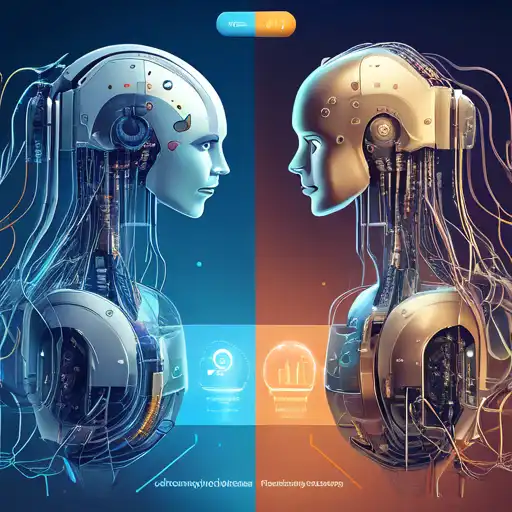Introduction to Machine Learning and Deep Learning
In the realm of artificial intelligence (AI), machine learning and deep learning are two of the most talked-about technologies. While they are often used interchangeably, they have distinct differences that set them apart. This article delves into the key differences between machine learning and deep learning, providing insights into how each technology operates and where they are best applied.
What is Machine Learning?
Machine learning is a subset of AI that enables systems to learn from data, identify patterns, and make decisions with minimal human intervention. It uses algorithms to parse data, learn from it, and then make a determination or prediction about something in the world.
Types of Machine Learning
- Supervised Learning: The model is trained on labeled data.
- Unsupervised Learning: The model finds hidden patterns or intrinsic structures in input data.
- Reinforcement Learning: The model learns to make decisions by performing certain actions and receiving rewards or penalties.
What is Deep Learning?
Deep learning is a subset of machine learning that uses neural networks with many layers (hence the 'deep' in deep learning) to analyze various factors of data. It is inspired by the structure and function of the human brain, specifically the interconnecting neurons.
Key Features of Deep Learning
- Automatic Feature Extraction: Unlike traditional machine learning, deep learning automatically discovers the representations needed for feature detection or classification from raw data.
- Large Data Requirements: Deep learning models require large amounts of data to perform well.
- Computational Intensity: Training deep learning models is computationally intensive, often requiring GPUs or TPUs.
Machine Learning vs. Deep Learning: Key Differences
While both machine learning and deep learning fall under the umbrella of AI, there are several key differences between them:
- Data Dependency: Deep learning requires significantly more data than machine learning to perform well.
- Hardware Requirements: Deep learning models need powerful hardware with GPUs, whereas machine learning models can run on lower-end systems.
- Feature Engineering: Machine learning relies on manual feature extraction, while deep learning automates this process.
- Interpretability: Machine learning models are generally easier to interpret than deep learning models.
Choosing Between Machine Learning and Deep Learning
The choice between machine learning and deep learning depends on the specific problem you're trying to solve, the amount of data you have, and the computational resources at your disposal. For problems with limited data or where interpretability is key, machine learning might be the better choice. For complex problems like image and speech recognition, deep learning is often more effective.
Conclusion
Understanding the differences between machine learning and deep learning is crucial for anyone looking to delve into the field of AI. While both technologies have their place, knowing when to use each can significantly impact the success of your projects. As AI continues to evolve, the lines between these technologies may blur, but their core differences will remain relevant.
